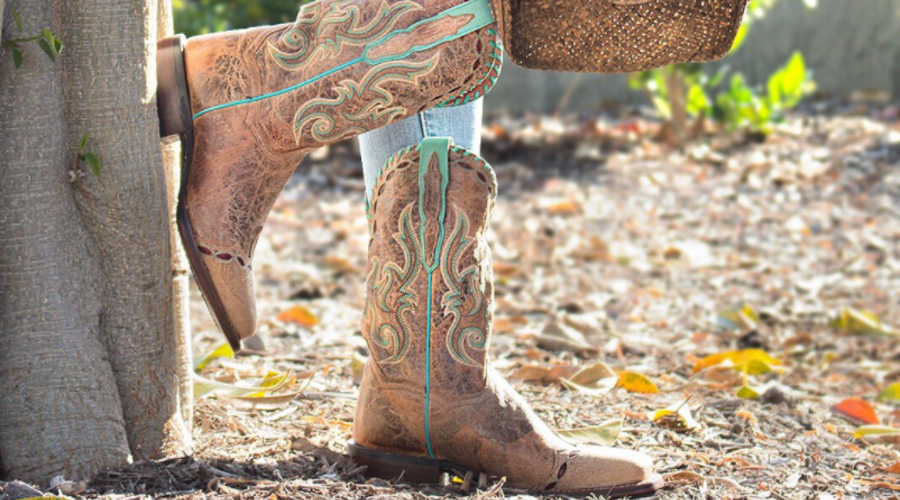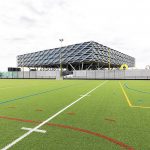Boot Barn President and CEO Jim Conroy said Thursday that the company was pleased with its fiscal second-quarter results, reflecting the continued expansion of the brand’s national footprint, especially since the retailer was up against tough Q2 comps over the last two years.
Fiscal second quarter total sales increased 6.5 percent to $374.5 million, cycling a strong 12.4 percent growth in the year-ago comparable quarter. The growth in Q2 was driven by 15 new stores added over the last 12 months, including the 10 stores Boot Barn opened during the second quarter.
New store sales were partially offset by a 4.8 percent decline in consolidated same-store sales, which Conroy said was within the company’s guidance range. Retail store same-store sales declined 3.8 percent, and e-commerce same-store sales fell 11.7 percent year-over-year.
“We feel good about this performance considering that the business recycled a plus-2 percent comp last year on top of a plus-62 percent in the prior-year period,” Conroy commented on a conference call with analysts to review Q2 results. “Average store sales remain elevated with a three-year stack in retail store same-store sales growth of more than 66 percent,” he said.
Second quarter e-commerce sales represented approximately 10 percent of total revenue but declined 11.7 percent. Conroy said the main bootbarn.com website posted a modest low-single-digit sales decline in Q2, faring much better than the balance of the company’s e-commerce business.
“Our comp sales were in line with expectations through August, but September experienced softer than expected results,” Conroy detailed. “The softening trend in same-store sales was broad-based across both geographies and merchandise categories, leading us to believe that the change in trajectory was driven by macro pressures and a decline in consumer spending.”
Conroy said the trend in Boot Barn’s more functional categories, such as work boots and men’s western merchandise, had experienced less of a decline than the more discretionary categories, like women’s western merchandise.
“It is also worth noting that while we have seen a greater decline in our more discretionary businesses, we are cycling a three-year comp growth in ladies’ western boots and apparel of more than 100 percent,” Conroy explained. “Geographically, our Texas business was weaker than the chain average, with our North and West regions outperforming the chains.”
Second quarter gross margin declined 90 basis points year-over-year to 35.8 percent of sales, driven primarily by 140 basis points of deleverage in buying, occupancy and distribution center costs driven mainly by occupancy costs of 50 new stores and operating costs related to the latest Kansas City distribution center.
Conroy noted on the call that Boot Barn achieved 50 basis points of merchandise margin expansion during the quarter, driven primarily by more than 600 basis points of growth and exclusive brand penetration to help partially offset the decline. The increase in merchandise margin rate was driven by 35 basis points of product margin expansion resulting primarily from growth in exclusive brand penetration and a 15 basis point improvement from lower freight expense as a percentage of net sales.
SG&A expenses were $95.3 million, or 25.5 percent of net sales, in fiscal Q2, compared to $84.9 million, or 24.2 percent of net sales, in the prior-year period. The increase in SG&A expenses compared to the prior-year period was said to be primarily a result of higher store payroll and store-related expenses associated with operating 50 new stores and general and administrative expenses in the current year. SG&A expenses, as a percentage of net sales, increased by 130 basis points, primarily resulting from higher store payroll and store-related expenses.
Resulting income from operations decreased $5.6 million to $38.6 million, or 10.3 percent of net sales, compared to $44.2 million, or 12.6 percent of net sales, in the prior-year period.
Net income was $27.7 million, or 90 cents per diluted share, in the fiscal second quarter, compared to net income of $32.1 million, or $1.06 per diluted share in the prior-year period.
Conroy said on the call that EPS for the quarter was at the high end of the company’s earnings guidance range.
Looking at real estate, Conroy reminded those on the call that a key growth initiative for Boot Barn is to build out the company’s store portfolio across the U.S. to solidify its position as the market leader. “With the opening of 10 new units in the second quarter, we have now opened 15 new stores in the last 12 months and 93 stores in the last two years,” Conroy outlined. “We continue to be quite pleased with the success of our store rollout as the group of stores opened over the past few years is projected to pay back within 18 months, with each individual store expected to pay back in less than three years.”
The company still believes it has the potential for 900 or more stores in the U.S., which Conroy said will provide a “significant lever for future growth in sales and earnings.” In addition to opening new stores, the company continues its store remodeling and relocation program.
The last of the company’s four strategic initiatives, exclusive brands, shows strong double-digit sales growth, with penetration increasing by over 600 basis points to 38.6 percent of sales.
“This is our fourth consecutive quarter of greater than 500 basis points of year-over-year growth, significantly outstripping our historically stated goal of 250-to-300 basis points of growth,” Conroy said. “The product design and development team continues to find opportunities to build market share, and our exclusive brand business alone is on track to generate more than $600 million in annual revenue.”
Looking at the current quarter’s business, Conroy said the company has seen the weakness in September creep over into October. “On a consolidated basis, October same-store sales declined 9.2 percent with our retail store same-store sales declining 8.2 percent and our e-commerce business down 16.7 percent,” he shared. “Fortunately, we have other growth drivers that continue to perform.”
He said that the company expects to build approximately 26 stores in the final two quarters of the year, which will drive top-line sales and build out market share.
“We also expect to see ongoing expansion in our merchandise margin rate for the balance of the year despite a decline in same-store sales, which is a testament to nimble execution by the entire merchandising team,” he said. “While we believe that the macro pressures are transitory, we are managing our inventory levels, markdown plans and expense structure closely to maximize earnings despite pressure in same-store sales growth,” Conroy shared. “The team has done a very good job of positioning our assortment and inventory levels as we enter the holiday season.”
The CEO said inventory was down 9 percent year-over-year to $586 million at the end of the quarter and down 14 percent on a comp-store basis. “It is partly due to this rigor and discipline that we were able to expand merchandise margin by 50 basis points in the second quarter, despite softening sales and moving through additional markdown inventory,” Conroy said.
Boot Barn finished the quarter with $39 million in cash and zero drawn on its $250 million revolving line of credit. Looking ahead, CFO Jim Watkins told the call participants that the company had lowered its guidance for the third quarter and full year and laid out its revised expectations against the high end of its prior guidance.
Watkins said the company expects third-quarter total sales to be $535 million, reflecting a same-store sales decline of 8.0 percent, with retail store same-store sales declining 7 percent and e-commerce same-store sales declining 12.5 percent.
Watkins said gross profit is expected to be $204 million, or approximately 38.2 percent of sales. “Gross profit reflects an estimated 310 basis point increase in merchandise margin, including a 260 basis point improvement in freight expense year-over-year and a 50 basis point improvement in product margins,” he detailed.
The company anticipates 150 basis points of deleverage in buying, occupancy and distributions in its costs. Operating income is expected to be $75 million, or 14 percent of sales, and earnings per diluted share of $1.79 for the third quarter.
“As a result of our year-to-date performance and our updated estimates for the rest of the year, we are lowering our full-year guidance,” he offered. “For the full fiscal year, we now expect total sales to be $1.70 billion, representing growth of 2.7 percent over fiscal 2023, which, as a reminder, was a 53-week year.” This compares to the previous guidance of $1.75 billion.
“We expect same-store sales to decline 5 percent with a retail store same-store sales decline of 4 percent, and an e-commerce same-store sales decline of 11 percent,” he continued. “This update compares to our previous guidance of a same-store sales decline of 3 percent.”
Watkins shared that gross profit is now expected to be $631 million for the year or approximately 37.1 percent of sales.
“Gross profit reflects an estimated 190 basis point increase in merchandise margin, including a 130 basis point improvement from freight expense and a 60 basis point improvement from product margin. We anticipate 170 basis points of deleverage in buying, occupancy, and distribution center costs,” said Watkins.
The company’s income from operations is now expected to be $210 million, or 12.3 percent of sales, for the year. Net income for fiscal 2024 is forecasted at $153 million, and earnings per diluted share to be $5.00 per share.
Interest expense is expected to be $2.4 million and capital expenditures to be $105 million for the full year.
















